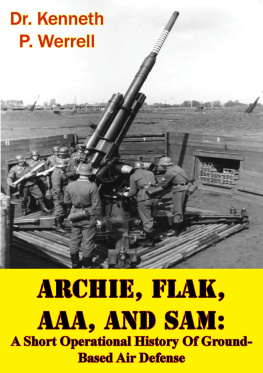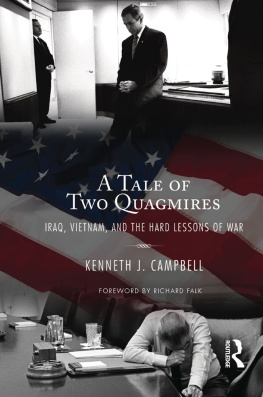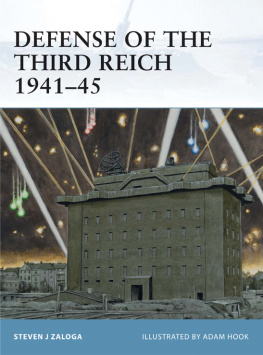

This edition is published by PICKLE PARTNERS PUBLISHINGwww.picklepartnerspublishing.com
To join our mailing list for new titles or for issues with our books picklepublishing@gmail.com
Or on Facebook
Text originally published in 1963 under the same title.
Pickle Partners Publishing 2015, all rights reserved. No part of this publication may be reproduced, stored in a retrieval system or transmitted by any means, electrical, mechanical or otherwise without the written permission of the copyright holder.
Publishers Note
Although in most cases we have retained the Authors original spelling and grammar to authentically reproduce the work of the Author and the original intent of such material, some additional notes and clarifications have been added for the modern readers benefit.
We have also made every effort to include all maps and illustrations of the original edition the limitations of formatting do not allow of including larger maps, we will upload as many of these maps as possible.


ARCHIE, FLAK, AAA, AND SAM A Short Operational History of Ground-Based Air Defense
By
Dr. Kenneth P. Werrell
DEDICATION

TABLE OF CONTENTS
ILLUSTRATIONS
Figure
1.German 7.7-cm antiaircraft gun, 1916
2.Improvised antiaircraft weapons
3.Antiaircraft battery training
4.British women receiving antiaircraft training
5.British experimenting with rockets during World War II
6.British 40-mm gun and crew
7.V-1 buzz bomb over London
8.Initial British defensive deployment
9.Preparing Pile mattress
10.3.7-inch gun mounted on a Pile mattress
11.Final British defensive deployment
12.Defense of Antwerp, Belgium
13.US 90-mm M-l AAA gun
14.German 88-mm gun
15.German 88-mm gun was versatile
16.88-mm gun on the march
17.German 128-mm gun
18.Ploesti mission was dramatic and costly
19.German radar in Romania
20.Ploesti was protected by smoke and guns
21.German light flak was very effective
22.German 20-mm guns aboard train
23.German light flak pieces mounted on motor vehicles
24.40-mm Bofors on truck chassis
25.50-mm gun on five-ton towing vehicle
26.128-mm railway guns were largest in Ploesti
27.German Taifun rocket
28.Enzian rocket
29.Rheintochter rocket
30.German Schmetterling
31.Wasserfall
32.Chaff
33.Liberator over Italy
34.B-17 nose shot away by flak over Cologne
35.German flak was impressive
36.Douglas A-20s attack Japanese positions at Karos
37.B-29 hit by Japanese flak on bombing run
38.75-mm Sky Sweeper
39.F-51 Mustang fighters at air base in Korea
40.F-80 Shooting Star jets destined for Communist transportation targets
41.B-26 light bombers
42.C-119s
43.T-6
44.Nike Ajax
45.Nike Hercules
46.Hawk
47.Redeye
48.Talos missile
49.Tartar missile
50.Boeing IM-99 Bomarc guided missile
51.Bomarc interceptor missile
52.American adviser instructing South Vietnamese troops
53.C-123K delivers needed supplies
54.North Vietnamese scramble for their guns
55.A-6A Intruder attack aircraft over the Gulf of Tonkin
56.F-105 Thunderchief pilots head for North Vietnam target
57.Phantom attacks
58.RF-4C reconnaissance aircraft
59.Abandoned surface-to-air missile site in North Vietnam
60.North Vietnamese SA-2 position
61.Soviet SA-2
62.SA-2 launch against US aircraft
63.EB-66
64.A-4 Skyhawk aircraft fires Shrike missile
65.F-105G Wild Weasel on the wing of a tanker
66.CH-53 helicopter
67.VNAF Choctaws
68.Regional forces scramble out of an H-34
69.Soviet SA-7 Grail surface-to-air missile
70.AQM-34V in flight with an AN/ALE-38 chaff Pod
71.Marine EA-6B Prowler aircraft
72.B-52 dropping bombs
73.B-52 aircraft damaged by SAM missile
74.Standard arm missile (AGM-78) igniting
75.Soviet SA-6
76.Soviet ZSU-23-4
77.Soviet SA-9
78.Canberra
79.Avro Vulcan
80.Hawker Siddeley Harrier
81.Blowpipe launcher ashore on the Falkland Islands
82.Stinger
83.Rapier surface-to-air antiaircraft missile
84.Rapier system under a camouflage net
85.7.62-mm GPMG deployed ashore on Falklands
86.Seacat
87.British antiaircraft weapons
88.Bofors antiaircraft gun served in the Falklands
89.Seaslug
90.Sea Dart launch during peacetime
91.Afghanistan rebels down Soviet helicopter
FOREWORD
Dr Kenneth Werrells history of ground-based air defense performs an important service both to scholarship and, more important, to the defense of our nations freedom. It is perhaps human nature that we tend over time to lose sight of the lessons of the past, especially when they do not conform to certain cherished preconceptions of ours. That such myopia can be dangerous, if not downright disastrous, Doctor Werrells study richly illustrates. Without sentimentalism, he chronicles a pattern of lessons learned and too quickly forgotten, as the marvel of air power was reminded again and again of its limitations and vulnerability. In Korea and in Vietnam, the American people were stripped of their illusions of national and technical omnipotence. The unhappy outcome of those two conflicts were doubly lamentable because the lessons of World War II wereor should have beenfresh in our minds. In that world war, as Doctor Werrell shows, relatively cheap ground-based air defense did make a difference: at Ploesti, at Antwerp, and at the Rhine bridges.
And it will make a difference tomorrow. The greatest value of Doctor Werrells work is that it provides guideposts and guidance for us as professional soldiers and aviators charged with upholding American security. We have taken historys lessons to heart as we plan and program our ground-based air defenses into the next decade and beyond. In both the forward and the rear areas, we have emphasized the time-honored principles of mass, mix, and mobility. No one weapon, not even todays modern aircraft, can do the job alone. That truism applies with particular force to antiaircraft defense. And at least one other truism emerges from Doctor Werrells and our own studies: effective air defense requires a joint and combined effort. Our planning has been predicated on the assumption that counter air will play a central role in safeguarding our ground forces from air attack. On the ground, the Air Defense Artillery will count on the cooperation and assistance of our colleagues in the infantry, armor, and field artillery. On our success or failure in working together to meet the challenges of tomorrow will rest our nations future.

DONALD R. INFANTE
Major General, US Army
Chief of Air Defense Artillery
Next page
















